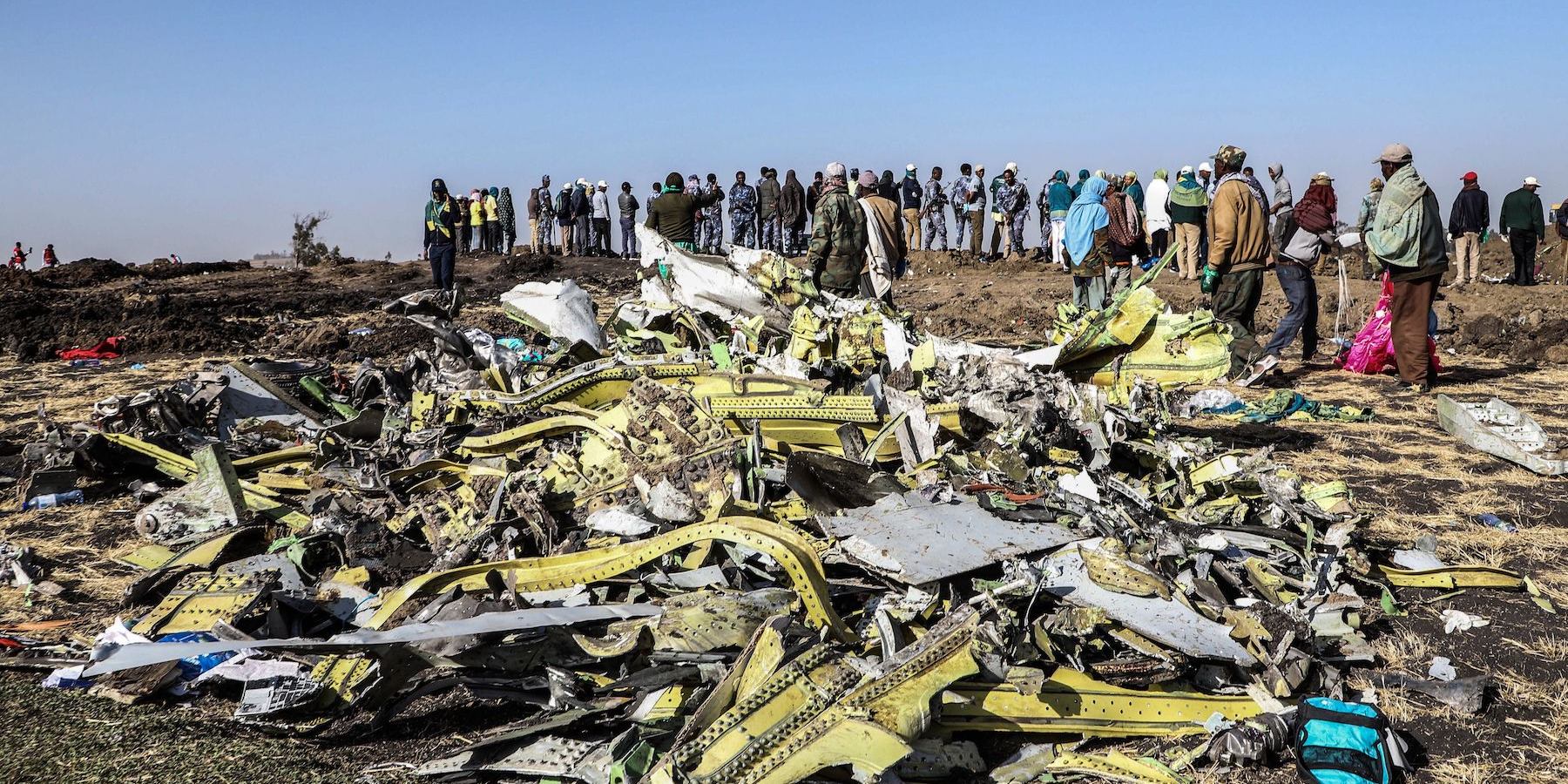- Investigators have reached the preliminary conclusion that an automated anti-stall system played a part in the fatal crash of the Boeing 737 Max 8 operated by Ethiopian Airlines, The Wall Street Journal reports.
- A flaw in the plane’s software system has been the main theory behind the crash, which killed 189 people early this month.
- The investigation into an earlier 737 Max 8 crash, a flight operated by Lion Air in October, has pointed to the same anti-stall system.
- Boeing has developed software updates and pilot training around the system in response, but they have yet to be implemented. In the meantime, the 737 Max is grounded.
Officials investigating the Ethiopian Airlines Boeing 737 Max 8 crash are said to have reached a preliminary conclusion that the plane’s automated anti-stall system activated during the disaster.
A fault in the plane’s software has been the most widely discussed theory for the Ethiopian Airlines crash that killed 189 people in March and also the Lion Air 737 Max 8 crash that killed 157 people in October.
People briefed on the preliminary conclusions told The Wall Street Journal that the plane’s Maneuvering Characteristics Augmentation System, which is designed to prevent stalls by automatically pointing the nose of the plane downward, mistakenly activated during the fatal Ethiopian Airlines flight.
The preliminary findings, reached through an analysis of the plane's so-called black box, is subject to change, people briefed on the matter told The Journal. They were shared at a high-level briefing at the Federal Aviation Administration on Thursday.

The preliminary report for the Lion Air crash also found that the plane's nose was repeatedly pushed down, leaving the pilot wrestling with the controls as it crashed into the Java Sea.
Ethiopia's transport minister said earlier this month that data from the black boxes of the two planes showed "clear similarities."
Boeing unveiled a software fix and new training procedures for the 737 Max on Wednesday in a bid to fix the planes, which have been grounded around the world after the two deadly crashes.
Most of the updates are to the MCAS system, which rely on data from what are known as angle-of-attack sensors, which measure the plane's orientation in the air.

Boeing said the updated software would "provide additional layers of protection if the AOA sensors provide erroneous data."
Boeing said the software updates had been put through hundreds of hours of analysis, laboratory tests, and simulator trials as well as two test flights.
Boeing is still working with the FAA to get the software and training updates certified, and the European Union and Canada are conducting their own reviews to the upgrades. The planes are likely to remain grounded until this certification takes place and pilot training is complete.
The acting head of the FAA told Congress on Wednesday that Boeing was allowed to oversee much of the certification of its own software, part of a long-standing policy mandated by Congress that is now under increased scrutiny.
Daniel Elwell, the acting FAA head, defended the process and said the FAA had initially overseen the software's certification before backing off. He said more authority was given to Boeing when the agency had "the comfort level" that the manufacturer could oversee the system.

But one lawmaker accused the FAA of doing "safety on the cheap," and an internal watchdog said that the system would change and that the FAA's certification of the 737 Max would be investigated.
- Read more coverage of the 737 Max crashes:

